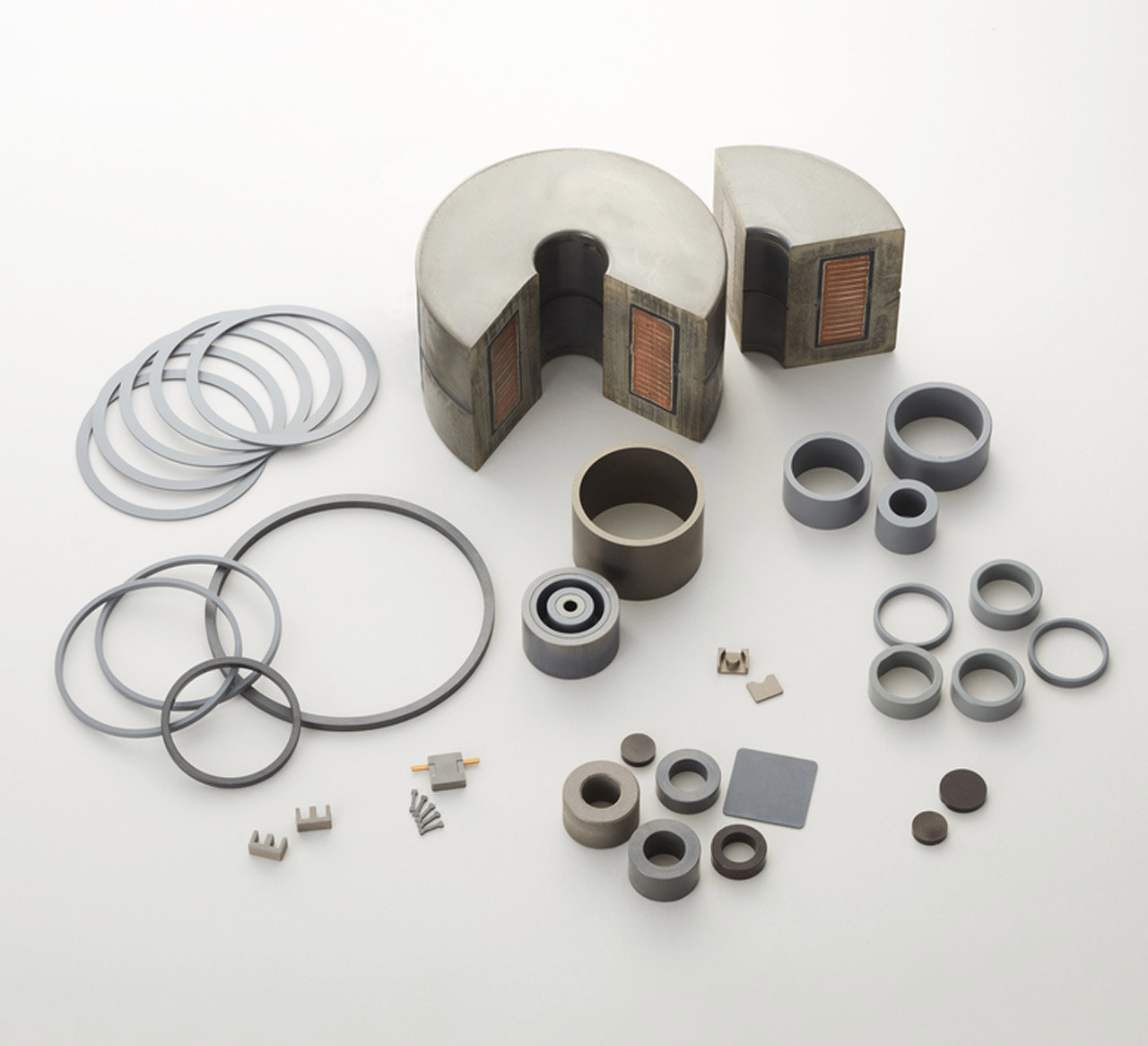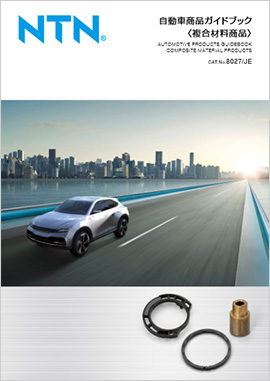About NIKAMET
- NTN's original magnetic material combining material technology including as plastic and sintered metal with high precision magnetization technology
- Compression molding and injection molding technologies enable mass-production in various shapes
- Hard magnetic material features high density and high magnetic force by high pressure molding
- Soft magnetic material is suitable for high current and induction hardening application
About magnetic material
Magnetic material is a generic term for material that becomes magnetized in a magnetic field where magnetic force is applied. Irons including nails, which are generally not magnetized, are attracted to magnet. This is because the magnet causes the nail to become magnetized. There are two types of magnetic materials: hard magnetic material that keeps its magnetism when magnetized once, and soft magnetic material that keeps magnetism only when magnetized. Hard magnetic material is used for permanent magnet of motors, and soft magnetic material is used for electromagnet such as iron core of coil.

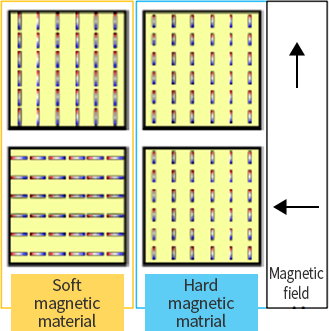
Magnetic Material Glossary
| Anisotropic magnet | Magnet generating strong magnetic force only in a particular magnetizing direction. Special molding equipment is required. |
|---|---|
| Isotropic magnet | Magnet generating the same strength by magnetizing in any direction with no directionality constraints. |
| Bonded magnet | Magnet manufactured by kneading magnetic powder into rubber or plastic. |
| Sintered magnet | Magnet manufactured by compression molding of metal powder and baking at high temperature. |
| Ferrite magnet | Magnet mainly composed of iron oxide Fe2O3. Low cost and high corrosion resistance. |
| Neodymium magnet | Magnet composed of Nd-Fe-B, having extremely strong magnetic force. |
| Amorphous magnetic material | Little reduction in electric and magnetic force conversion capability even at high frequencies. |
| Saturation magnetic flux density | The maximum magnetic force per unit area that the material can generate. |
| Residual magnetic flux density | Magnetic force remaining after magnetization of material. The strength is less than or equal to the saturation magnetic flux density. |
| Coercivity | Reverse magnetic force required to completely remove the magnetic force. Indicator of the ease of deterioration. |
| Iron loss | Energy loss that occurs when magnetic forces are generated in magnetic material. Released as heat. |
| Permeability | Property of material that indicates its ability to convert electricity into magnetic force, or ease with which magnetic force is transmitted. |
Compression and Injection Molding for Various Shapes
- Realize both high flexibility in shape and high volume production by compression and injection molding
- Compression molding realizes high density and high magnetic force in hard magnetic material, and low iron loss and long operating life in soft magnetic material
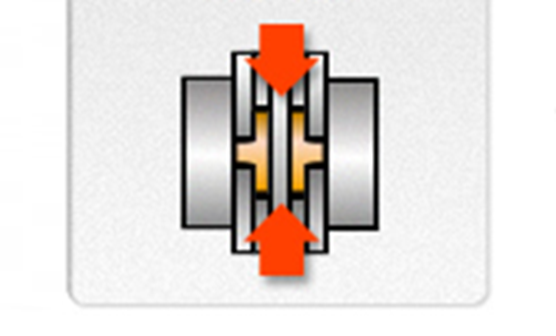
Compression molding
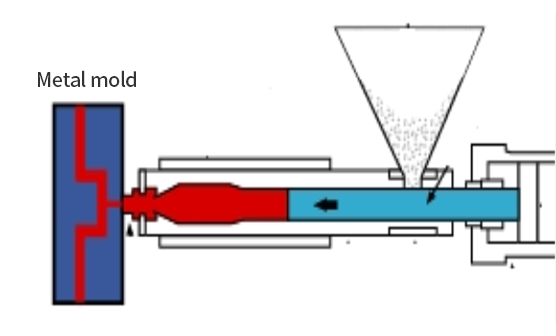
Injection molding
Mass-production through Processing Method with No Material Waste
NIKAMET features environment-friendly manufacturing method. As it is manufactured by pressing and forming metal powder or injection molding of plastic, almost 100% of the input materials can be turned into products, making effective use of resources. In addition, the use of highly durable molds realizes mass-production of high precision products in a short period of time.
Product Lineup
Hard magnetic material
- It is suitable for sensor magnet and motor magnet with industry's highest level of high magnetism and high heat resistance by compression molding
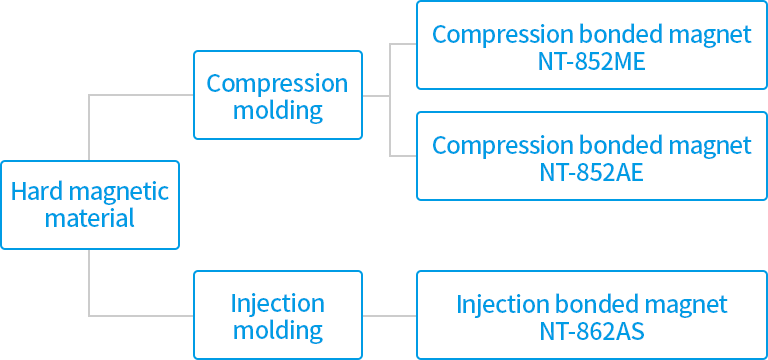
Performance comparison with other products (Ferrite sintered magnet)
| NIKAMET (hard magnetic material) | ||||
|---|---|---|---|---|
Injection bonded magnet |
Compression bonded magnet |
Compression bonded magnet |
Ferrite sintered magnet | |
| Output | △ | ◎ | 〇 | ✕ |
| Heat resistance | ◎ | △ | 〇 | ◎ |
| Shape freedom degree | ◎ | 〇 | 〇 | △ (cutting/grinding) |
| Cost | △ | △ | △ | ◎ |
Soft magnetic material
- Feature high shape flexibility for various applications
- Can be used in special environments such as high current and high frequency
- Suitable for induction hardening core and choke coil
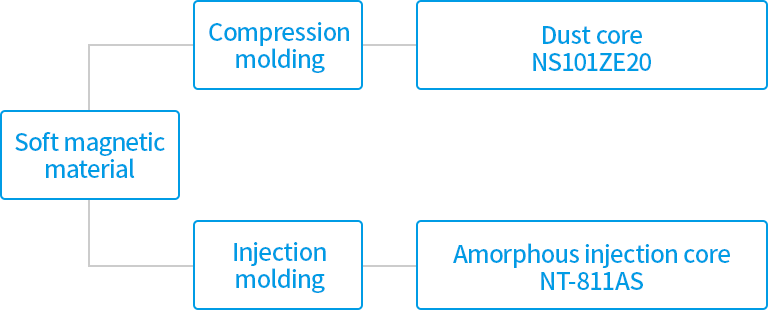
Comparison of performance with other products (soft ferrite)
| NIKAMET (soft magnetic material) | |||
|---|---|---|---|
Amorphous injection core |
Dust core |
Soft ferrite | |
| Large current | 〇 | 〇 | ✕ |
| High frequency | ◎ | 〇 | ✕ |
| High efficiency | △ | 〇 | ◎ |
| Shape flexibility | ◎ | 〇 | △ (cutting/polishing) |
| Cost | △ | 〇 | ◎ |
Typical Material Features and Applications
Hard magnetic material
| Representative part number | Manufacturing method | Features |
|---|---|---|
| NT-852ME | Compression |
|
| NT-852AE | Compression |
|
| NT-862AS | Injection |
|
- *MGOe: The unit of maximum energy product. The maximum value of the product of the demagnetizing field "Hd" and the magnetic flux density "Bd." The larger the value, the more magnetic flux remains in the demagnetizing field, indicating excellent magnetic properties as a permanent magnet.
Soft magnetic material
| Representative part number | Manufacturing method | Features |
|---|---|---|
| NS101ZE20 | Compression |
|
| NT-811AS | Injection |
|
Application Examples
Automobile
Steering angle sensor
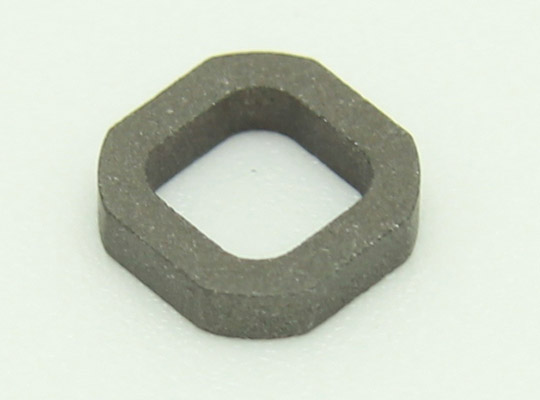
Compression bonded magnet
It is isotropic Nd-Fe-B bonded magnet with high density and strong magnetic characteristics by high load compression molding. High precision molding enables magnetic circuit design over a wide range. Optimum shape is designed by magnetic analysis and high magnetic force magnet is realized by compression molding.
Exhaust sensor
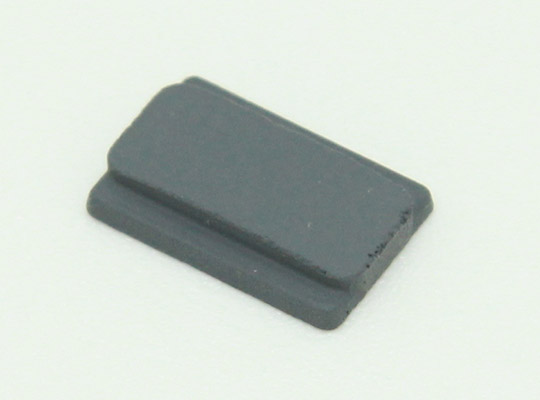
Compression bonded magnet
It is isotropic Nd-Fe-B bonded magnet with high density and strong magnetic characteristics by high load compression molding. High precision molding enables magnetic circuit design over a wide range. Optimum shape is designed by magnetic analysis and high powered magnet is realized by compression molding.
Electric steering lock

Injection bonded magnet + Plastic case
Injection bonded magnet: It is isotropic Nd-Fe-B bonded magnet. Compared to ferrite bonded magnet, it has excellent magnetic properties. As it can be manufactured by injection molding, it has greater design freedom.
Plastic case: It is injection bonded magnet with insert-molded plastic case. The injection bonded magnet is designed in a shape that is in line with the case, and its shape freedom is utilized to achieve integration.
Valve opening sensor
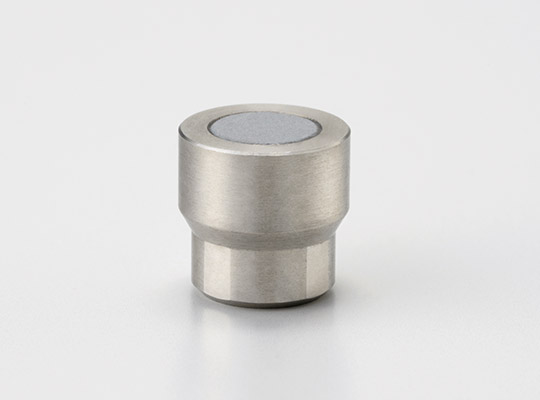
Compression bonded magnet + Sintered metal case
It is compression bonded magnet attached to a sintered metal case. It can be provided as inserted in sintered metal case to protect the magnet and eliminate the assembly process by users.
Medical equipment
Choke coil core for MRI power supply
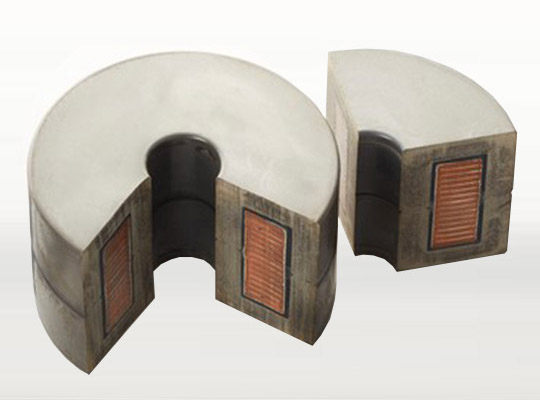
It realizes downsized and lighter weight and can be used with large currents through the usage of amorphous soft magnetic material, a proprietary material suited to injection molding.
Induction hardening equipment
Core for induction hardening equipment
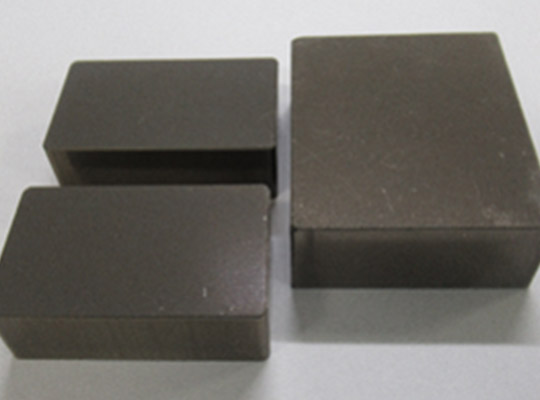
By coating iron magnetic powder with a proprietary thermosetting plastic and applying special compression molding and heat hardening, it achieves the industry's highest magnetic properties and strength.
By selecting the optimum iron powder and compounding it with thermosetting plastic, long life is achieved while ensuring the necessary magnetic properties.

